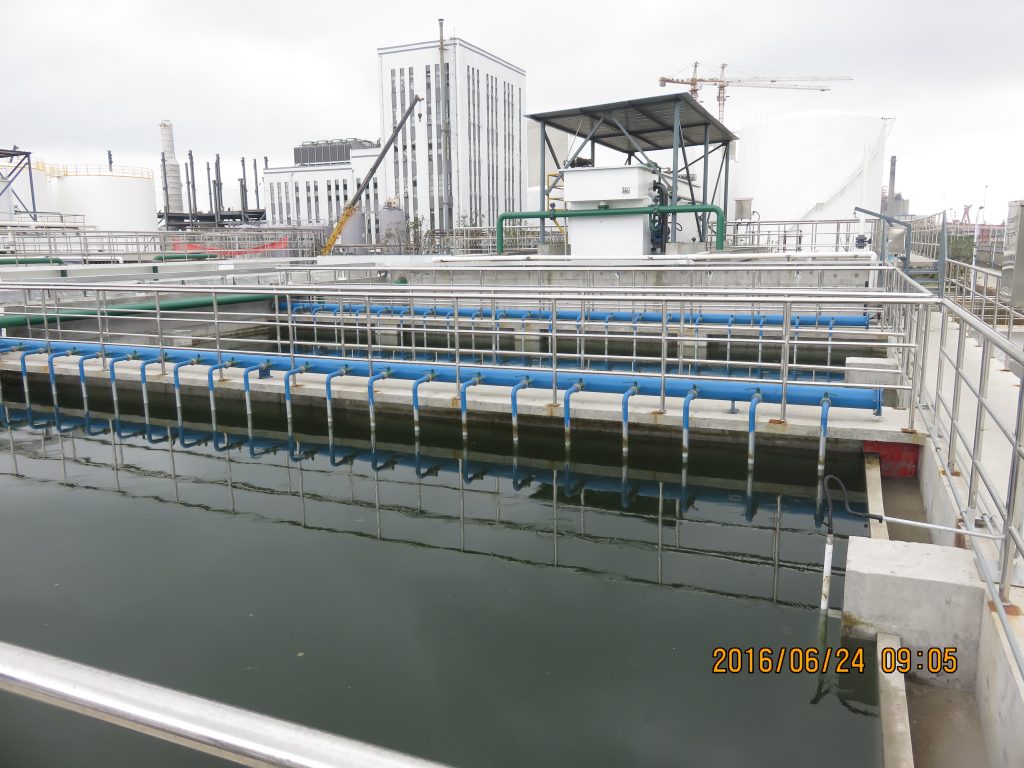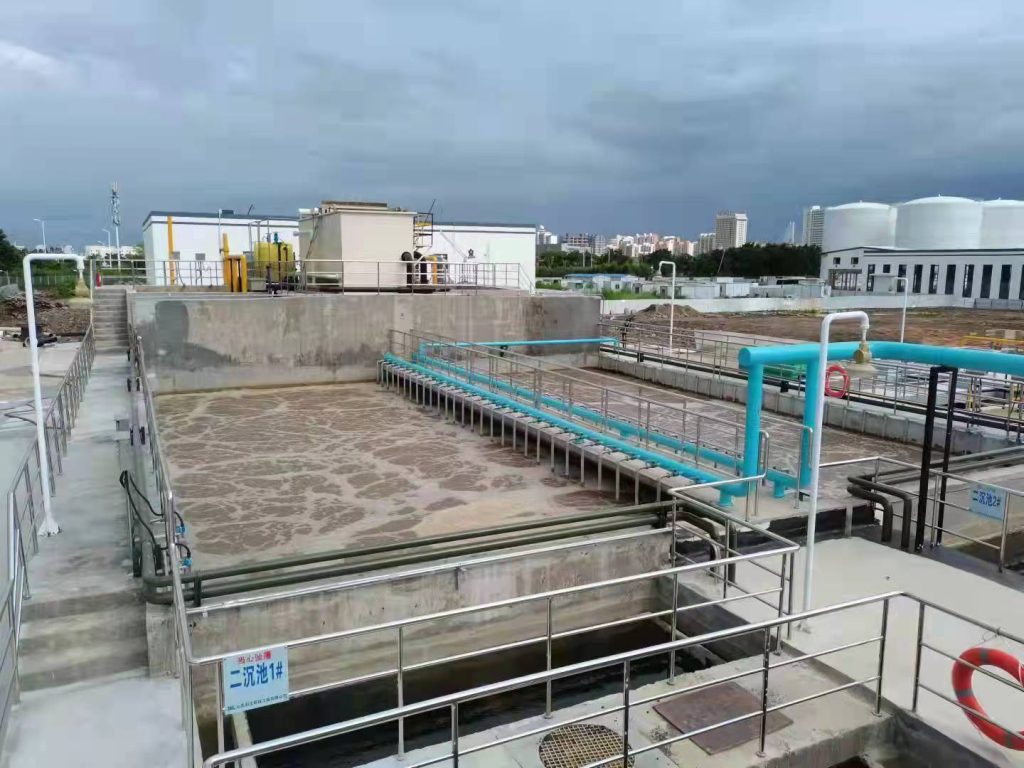Bacterial death reasons and prevention and control measures in the biochemical system!
During the daily operation of the sewage system, why do the bacteria in the biochemical tank die? In addition, how do we determine the bacteria have died? Today, I will analyze the reasons and hope to be helpful to you.

一、Conditions affecting microbial bacterial growth
Microbial bacteria are affected by factors such as pH, temperature, salinity, heavy metals, DO (dissolved oxygen), aromatic organic compounds, etc. When cultivating microorganisms, attention should be paid to changes in these.
1.pH value
When the pH value in the sewage system is less than 6 or greater than 9, it has a toxic effect on microorganisms, and the more acidic or alkaline it is, the greater the toxic effect. Some microorganisms have extremely strict pH requirements, such as methane-producing bacteria in anaerobic systems, which are suitable for pH values of 6.8-7.2, and nitrifying bacteria in aerobic systems will be inhibited when the pH is below 7.
2.Temperature
The suitable temperature for microbial growth is between 15°C and 35°C. When the water temperature in the system is below 15°C, the activity of microorganisms decreases significantly, and this has an obvious effect on nitrifying bacteria. When the temperature is above 40°C, some bacteria have already started to die. Nitrifying bacteria begin to become inactive at temperatures above 38°C, and most bacteria begin to die at temperatures above 45°C.
3.Salinity
The microbial bacteria inoculated from sludge through municipal sewage generally have a salt tolerance of about 0.7%. When the salinity exceeds 1%, there is obvious inhibition or death. Bacteria have strong mutability, and they will gradually adapt as the environment changes. With long-term cultivation and domestication, the system can gradually increase the salinity to make the system bacteria adapt to higher salinity, but the cultivation time is long and the difficulty is high.
4.Heavy metals
Common heavy metals in sewage include copper, chromium, nickel, mercury, silver, arsenic, etc., which mainly affect the protein of the bacterial body and affect the survival of the bacteria. When the content of these heavy metals is too high, it will also cause bacterial death. Different heavy metals have different concentrations affecting bacteria, which need to be determined based on actual conditions.
5.DO (dissolved oxygen)
For aerobic bacteria, if the DO is below 1mg/l, the bacteria will be inhibited to a certain extent, and if the DO is below 0.5mg/l, the inhibition of aerobic bacteria will be obvious or fatal. For anaerobic bacteria, if the DO is greater than 0.5mg/l, the inhibition of anaerobic bacteria is obvious. Therefore, if the DO is not well controlled, it will also cause bacterial death or inhibition.
6.Aromatic organic compounds/oil components
Aromatic organic compounds such as phenol have a strong inhibitory and toxic effect on organisms at a certain concentration, and the tolerance of anaerobic and aerobic bacteria is different.
When sewage contains a large amount of oil, it will adhere to and cover the activated sludge or biofilm, making it difficult for dissolved oxygen and nutrients to enter the activated sludge and biofilm, which will cause bacterial death due to lack of nutrients or dissolved oxygen.

二、How to avoid bacterial death in sewage system operation
1. pH value
Control the pH of the influent, generally keeping it neutral is sufficient. Sometimes in special sewage systems, it is necessary to adjust the pH in the aerobic tank to be controlled at 7.5~8, which is conducive to the nitrifying bacteria to carry out nitrification reaction.
2.Temperature
Try to control the temperature between 15℃~35℃. In winter, it is necessary to consider measures such as heating and insulation. In the case of low water temperature, the main impact is still on nitrifying bacteria. You can cultivate and acclimate nitrifying bacteria outside the system and replenish them into the system every day or every few days. When the water temperature is higher than 40 degrees, it is necessary to consider cooling measures, such as heat exchangers, natural cooling of water inlet drop, and other measures.
3.Salinity
Salinity can be gradually acclimated within a certain range to increase the salt tolerance of the system. It is also possible to add strains with high salt tolerance. Dilution of influent to reduce salinity is also a measure. If there are desalination devices such as MVF at the end, water production can be used to dilute the raw water and complete the cycle after passing through the desalination device.
4.Heavy metals
For sewage containing heavy metals, physical and chemical treatment for heavy metal removal is required in the front section, and other impacts brought about by heavy metal removal, such as salinity and pH, should also be considered.
5.DO (dissolved oxygen)
Different biochemical tanks in the biological system need to control dissolved oxygen in different ranges. The dissolved oxygen in the aerobic tank is best controlled between 2~4mg/l, the anoxic tank is controlled at about 0.2mg/l, and the anaerobic tank is controlled below 0.2mg/l. Controlling dissolved oxygen requires detecting the dissolved oxygen in the tank and then controlling the air intake. Therefore, the precision of the detection equipment is required, and it also needs to be calibrated regularly.
6.Aromatic organic compounds/oil components
For influent containing toxic and harmful organic compounds, physical and chemical treatment (such as coagulation, flotation, advanced oxidation, etc.) can be considered before entering the biological system to improve the biodegradability of the sewage.
For influent containing oil, measures such as oil separation and removal should be set in the front section, such as oil separation tanks, air flotation, oil removal equipment, etc. Control the total oil content to be within 20mg/L.

三、Ways to determine bacterial death in sewage systems:
1. Microscopic observation
Since bacterial cells are very small, it is difficult to observe them without a microscope. By using a microscope to examine the number and types of protozoa, we can infer the condition of the sludge. Certain indicator protozoa can represent the condition of the sludge. For example, the presence of ciliates may indicate a longer retention time of sludge and can be an indicator of nitrification.
2.Visual observation
If a microscope is not available, we can indirectly judge whether bacteria are dead by examining the condition of the sludge. For example, if there is a large amount of sludge floating in the aerobic tank, it may be due to the death of the sludge, which will also lead to the death of a large number of bacteria. In the case of a biofilm reactor, if there is a large amount of biofilm falling off, it may also indicate a large number of bacterial deaths.
3.Observation of the settling ratio of activated sludge
We can determine the aging of activated sludge by observing the settling ratio of SV30, and then determine the survival rate of microorganisms based on empirical values.
4.Comprehensive observation
We can judge the situation by detecting data from various links, such as changes in ammonia nitrogen values in the influent and effluent of the aerobic tank. If the removal rate of ammonia nitrogen is significantly reduced, there may be a large number of nitrifying bacteria deaths, or it may be due to insufficient alkalinity, so specific problems need to be analyzed specifically.
